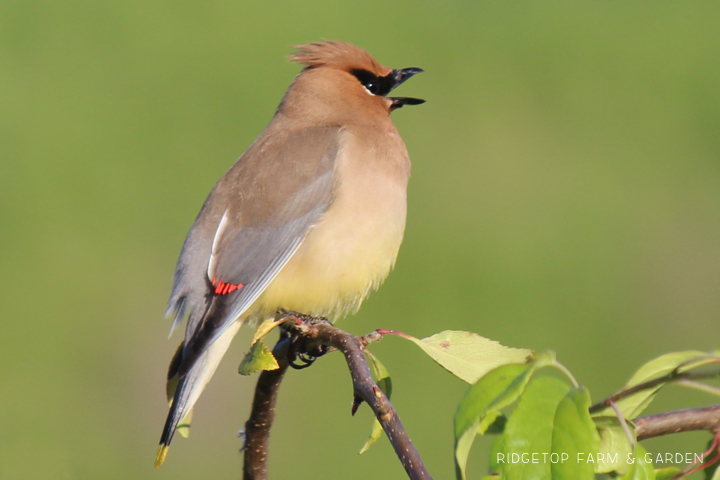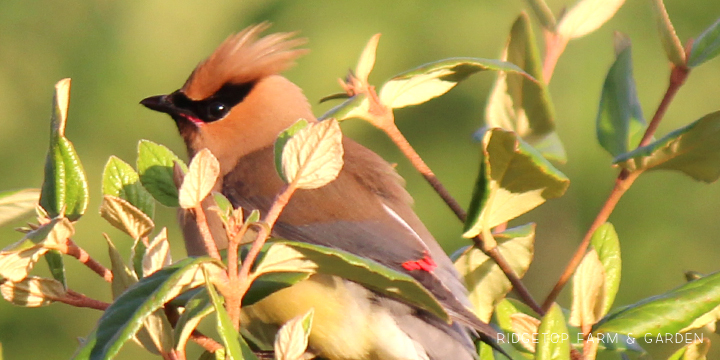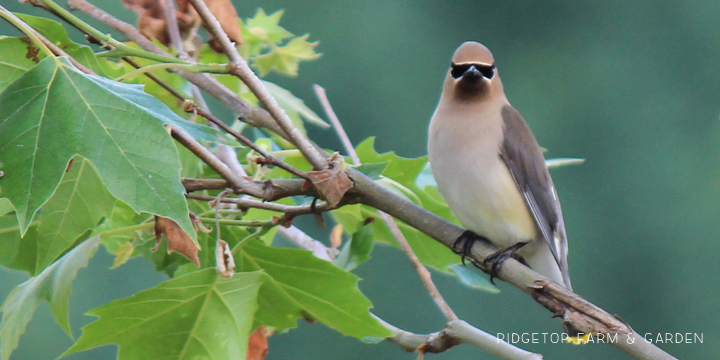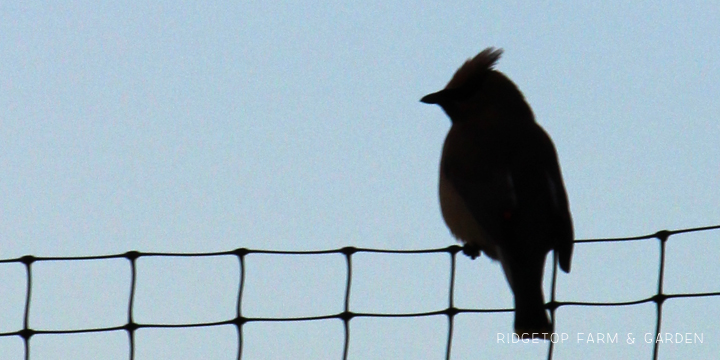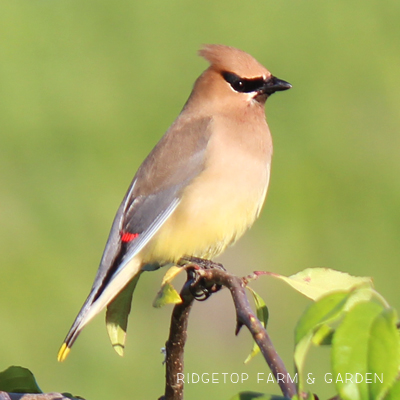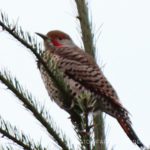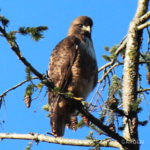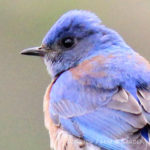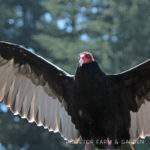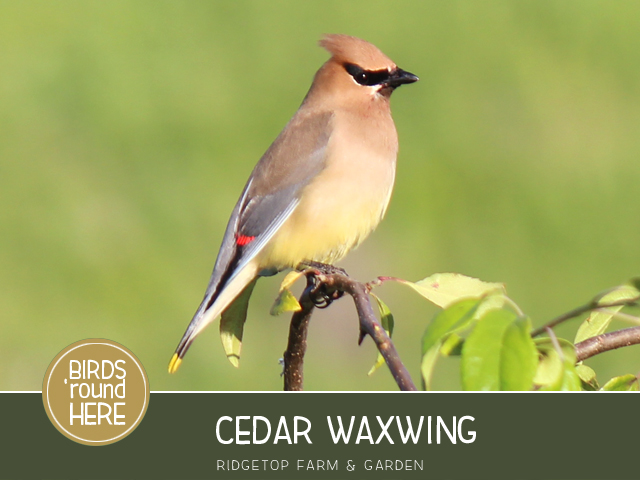
Cedar waxwings are a beautiful bird and one of my favorites. They almost seem exotic in our woodlands.
They visit us every year around June or July. They don’t stay long, though.
IDENTIFICATION
HEAD: light brown
FACE: light brown with black mask outlined in white
CHIN: brown or black
CHEST: light brown
BELLY: light yellow
WINGS: light brown and gray, sometimes with a red tip
TAIL: gray, with bright yellow tip, underside has white
BILL: short
EYE: black
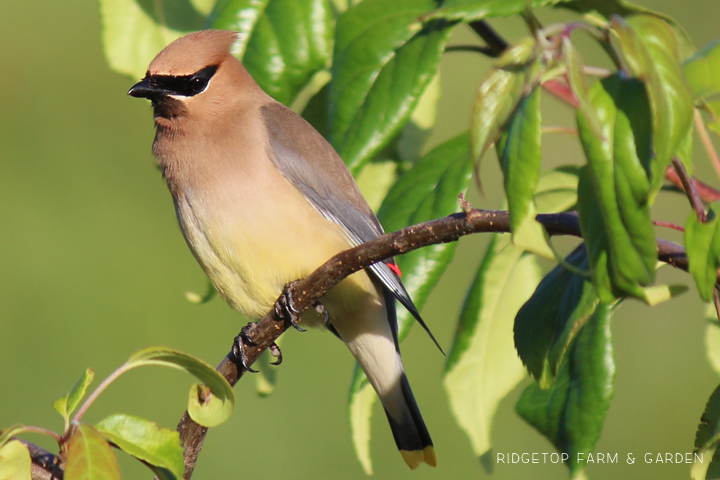
The feature that stands out the most to me on a cedar waxwing is the crest. Sometimes it lays back and sometimes it sticks up.
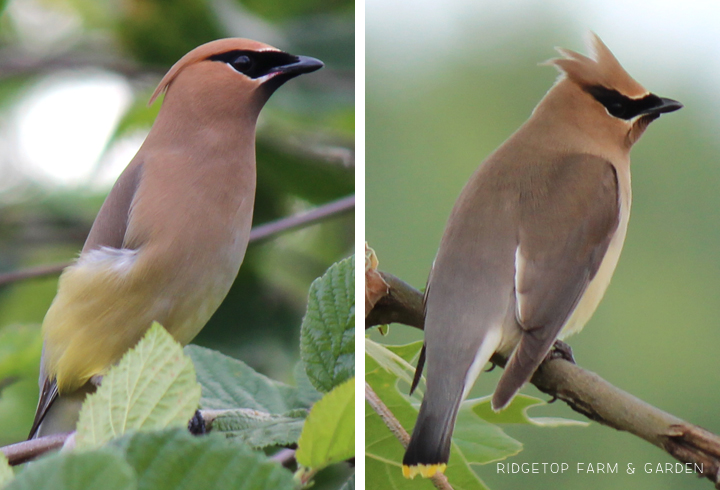
HABITAT
Cedar waxwings can be found in many places including woodlands, farms, fields, and suburbs. During the summer months most areas in the northern US and Canada that have fruiting trees and shrubs have the potential of cedar waxwings showing up.
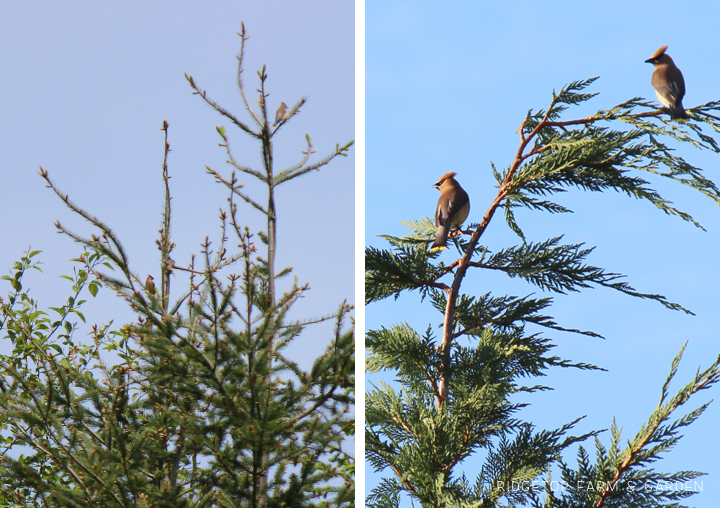
Most often I notice waxwings perched in the trees, but occasionally I see them on the ground searching for food.
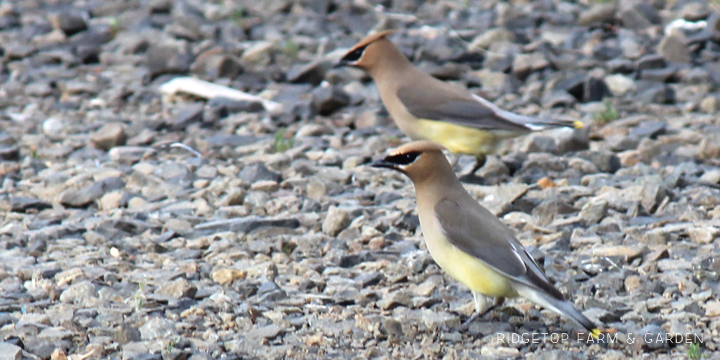
FEEDING
Insects and berries are the main food sources of a cedar waxwing.
They tend to eat lots of cedar berries during the winter months, which is how they got their name.
Sometimes they will pick a berry and pass it to their friend.
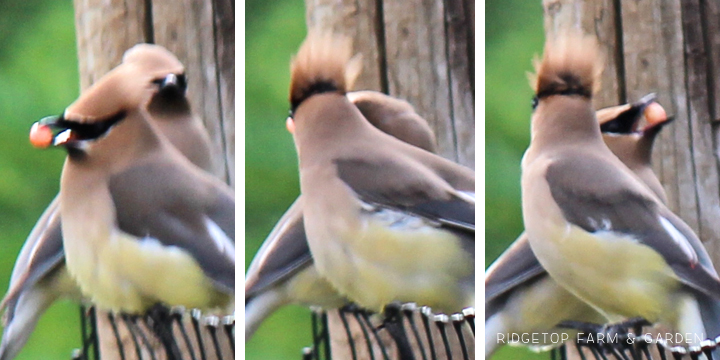
Farmer John is not impressed with their love of our raspberries.
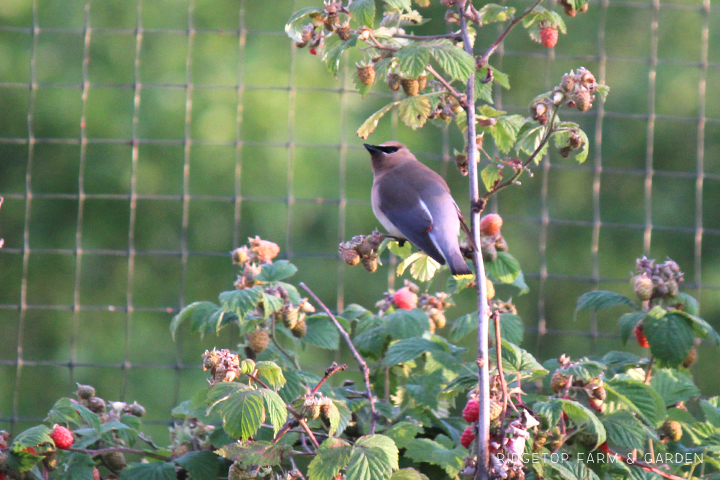
FRIENDS & FAMILY
FAMILY: Waxwings
SCIENTIFIC NAME: Bombycilla cedrorum
Cedar waxwings travel in flocks, sometimes quite large numbers group together. We often see about 10 – 15 at a time.
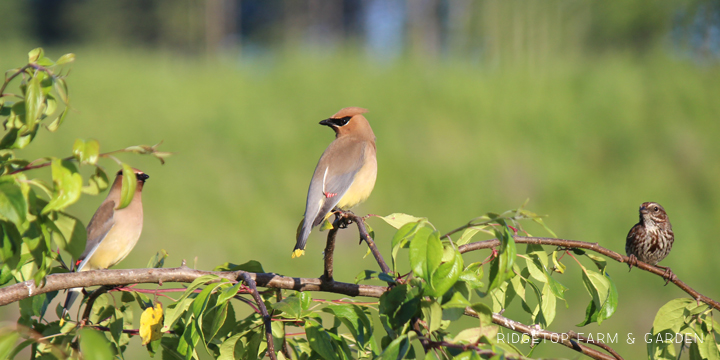
PHOTO GALLERY
